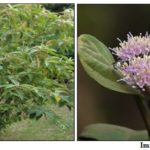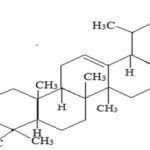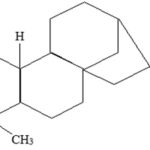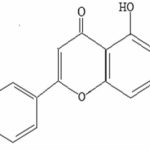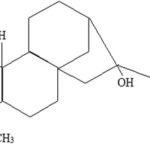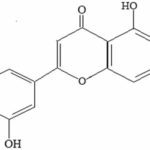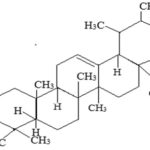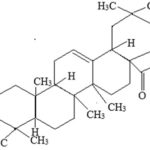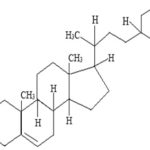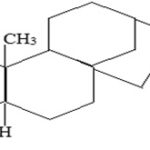CALLICARPA MACROPHYLLA: A REVIEW UPDATE ON ITS BOTANY, ETHNOBOTANY, PHYTOCHEMISTRY AND PHARMACOLOGY
HTML Full TextCALLICARPA MACROPHYLLA: A REVIEW UPDATE ON ITS BOTANY, ETHNOBOTANY, PHYTOCHEMISTRY AND PHARMACOLOGY
Rajesh Kumar Soni *, Vihangesh Dixit, Raghuveer Irchhaiya and Shashi Alok
Department of Pharmacognosy, Bundelkhand University, Jhansi - 284128, Uttar Pradesh, India.
ABSTRACT: Callicarpa macrophylla (Verbenaceae) has been commonly used in traditional medicine for a wide range of ailments related to the circulatory, digestive, endocrine, respiratory and skeletal systems as well as to infectious diseases. It provides the up-to-date information that is available on the botany, traditional uses, phytochemistry, pharmacology, and toxicology of Callicarpa macrophylla. Additionally, to highlight the possible uses of this species to treat different diseases and to provide a basis for future research. The information was collected from scientific journals, books, theses, and reports via a library and electronic search (Google Scholar, Web of Science and Science Direct). The phytochemical studies have shown the presence of many secondary metabolites belonging to terpenoids, flavonoids, carbohydrate, lignans, phenols, and sterols. Crude extracts and isolated compounds from Callicarpa macrophylla show a wide spectrum of pharmacological activities, such as anti-diabetic, anti-inflammatory, antifungal, antibacterial, anti-arthritic, anti-pyretic & analgesic activities, as well as a usefulness help in alleviating pain in rheumatism. Callicarpa macrophylla has been a widely used a source of medicine for years without any adverse effects. Many studies have provided evidence for various traditional uses. However, there is a need for additional studies of the isolated compounds to validate the traditional uses in human models. The present review on the botany, traditional uses, phytochemistry has provided preliminary information for further studies and commercial exploitations of the plant.
| Keywords: |
Callicarpa macrophylla Vahl., Phytochemistry and Pharmacological report
INTRODUCTION: Medicinal plants play a key role in human health care. About 80% of the world population relies on the use of traditional medicine which is predominantly based on plant materials 1.
As per World Health Organisation (WHO) estimates, almost 80% of the population of developing countries relies on traditional medicines, mostly plant drugs, for their primary health care needs 2, 3, 4.
It is estimated that about 7,500 plants are used in local health traditions in, mostly, rural and tribal villages of India. Out of these, the real medicinal value of over 4,000 plants is either little known or hitherto unknown to the mainstream population. The classical systems of medicine such as Ayurveda, Siddha, Amchi, Unani and Tibetan use about 1,200 plants 5. Priyangu (Callicarpa macrophylla Vahl.) is a shrub. It belongs to family Verbenaceae. It is an important known medicinal plant of the lower warm valleys of the Himalaya. In addition to the Ayurveda system, C. macrophylla is widely used in many traditional medical systems, such as the Sidha, homeopathy, and Unani systems 6. The flower buds of C. macrophylla used in the ayurvedic formulation such as Priyangwadi tel, Ashwagandharista, Dasamoolarist, Chandana sava, Draksharista, Eladi churn 7. According to the present review compiles the fragmented information on the botany, traditional uses, phytochemistry, pharmacology, and toxicology of this plant. We hope that this information will highlight the importance of Callicarpa macrophylla and will provide a new direction for researchers in the future.
Taxonomy and Morphology: Callicarpa macrophylla Vahl (Symb. Bot. 3: 13 (1794) is used as an accepted name, and A.F. Judd first collected it in 1928 with specimen BISH 71847 and deposited in Royal Botanical Garden, Kew. The synonyms of Callicarpa dunniana and Callicarpa incana Roxb. Callicarpa macrophylla is a small tree 3-5 mm high. Stem and branches densely covered with a greyish tomentum of stellate hairs. Leaves: lamina ovate or narrowly elliptic to oblong-lanceolate, acuminate, cuneate, obtuse or rounded at the base, crenate-serrate or crenate-dentate, 10-35 cm long, 2-18 cm broad, mature glabrescent and rugose above or with very numerous stubble-like small hairs, densely greyish-white stellate-tomentose beneath; petiole 1-2 (-2.5) cm long, densely floccose-tomentose.
The inflorescence is densely stellate-hairy; primary peduncles equal to or a little longer than the petioles, 1-2.5 (-3) cm long. Flowers on short, slender pedicels; pedicel gland-dotted, tomentose, ± 1 mm long. Calyx minutely 4-denticulate, 1-1.5 mm long, glandular outside, with coarse stellate-hairs at the base, glabrous inside. Corolla violet or lilac, thinly hairy or almost glabrous with yellow glandular dots outside, glabrous inside, 2.5-3.5 mm long; lobes 1-1.5 mm long, obtuse or rounded; tube 2-2.5 mm long. Stamens exserted, inserted near the base of the corolla-tube; filaments 4-6 mm long; anthers oblong, ± 0.7 mm long, 0.4-0.5 mm broad, glandular along the connective. Ovary globose, glabrous, densely glandular, 0.5-1 mm in diameter; style exserted, glabrous, 5-8 mm long, stigma capitate. Fruit globular, ± 2 mm in diameter, glabrous, glandular, smooth, white 8, 9. C. macrophylla flowers from May to August and fruits from September to February 10 Fig. 1.
Scientific Classification:
Kingdom : Plantae
Unranked : Angiosperms
Unranked : Eudicots
Unranked : Asterids
Order : Lamiales
Family : Verbenaceae
Genus : Callicarpa
Species : C. macrophylla
FIG. 1: CALLICARPA MACROPHYLLA VAHL PLANT
Distribution and Propagation: C. macrophylla is globally distributed across India, China, Bhutan, Myanmar, South East Asia, and Nepal. In India, it is distributed in Jammu & Kashmir, Himachal Pradesh, Uttar Pradesh, Bihar, Sikkim, West Bengal, Arunachal Pradesh, Assam, Meghalaya, Nagaland, Manipur, Mizoram, Tripura, and Andhra Pradesh, up to an altitude of 1800 meters 13, 14. It is cultivated in drained sandy, loamy and clayey soils with acidic and alkaline nature. The hardy zone preferred is majorly cultivated at altitudes of Himalayas. It is also found near swampy areas, waste lands, and roadsides. Plant propagation is by seed on February 13.
Vernacular Names and Traditional Uses: C. macrophylla is commonly known as “Velvety Beauty Berry.” Various vernacular names know it in different geographical regions Table 1. Despite their wide use in Chinese medicine 14. In addition to the traditional and medicinal uses for the treatment of different diseases and disorder such as a tumor, polydipsia, diarrhea, diabetes, dysentery, fever, as a blood purifier, anti-pyretic, analgesic, anti-ulcer, gastric stimulants, etc. The juice made from leaves used in gastric troubles, headache and stop bleeding 15, 16; and rarely used as food vegetable, spices in Western Chitwan, Nepal 17.
TABLE 1: VERNACULAR NAMES OF C. MACROPHYLLA VAHL.
| Vernacular names | Region/language/system of medicine |
| Mathara, Barmala, Dhalahuja, Aplotan, Fulujha, Jugga harina. | Bengali |
| bonmala, tong loti | Assamese |
| bhirmoli, dahiya, daia, daiya, daya, priyamgu, bastara | Hindi |
| chimpompil, chinpompil, cimpompil, nalal | Malayalam |
| mondol-panamana | Manipuri |
| huahkhar | Mizoram |
| anganapriya, gandhaphali, kanta, phalin, phalini, priyangu, priyanguka, syama, vanita | Sanskrit |
| Nalalu, kattu-k-kumil | Tamil |
| ga ndha pri yam ku, gandha pri ya nku (d), gandha priyanku (d), pri yan, pri-yam-ku, pri-yan-ku | Tibetan |
| Gandha-priyangu | Ayurvedic |
| Dayezizhu | Pinying |
| Big-leaf Beautyberry, urn fruit, Perfumed cherry | English |
| da ye zi zhu | Chinese |
| Guenlo | Nepali |
| Tichangsa | Chepang |
| Dahidhula | Darai |
| Dahigun | Tharu |
| Habb-ul-Mihlb (Prunus mahaleb) | Unani |
| dahigun | Tamang |
| Kanphuli, aesar | Marathi |
| Ibbani, rushipatri | Kannada |
| latapriyangu | Gujarati |
| sungru muuk | Lepcha |
| ayamsar | Konkani |
| Darus, denthar, patthar man | Punjabi |
Phytochemistry: C. macrophylla leaves contains α-amyrenol, α-amyrin, ursolic acid, 2α, 3α, 19α-trihydroxy -12-dien-28- ursolic acid, betulinic acid, β-sitosterol, daucosterol 18; flavanoids such as luteolin, apigenin, luteolin-7-O-glucuronide, apigenin -7 -O -glucuronide, β –sitosterol –β -D-glucoside, 2α-hydroxy ursolic acid, crategolic acid, docosanoic acid, tricosanoic acid, tetracosanoic acid, ethyl tricosanoate, 3,7,3′-trimethoxy-4′,5-dihydroxyflavone 19, 20. The bark contains betulinic acid 18. The roots and aerial part contains essential oil, (diterpene) calliterpenone, calliterpenone monoacetate 21; & Seeds contains calliterpenone, calliterpenone-17-acetate, oleanolic acid. Several compounds were isolated from diterpenoid- (16α, 17-Isopropylideno-3-oxo-phyllocladane 23, 24; 3β, 16α, 17-trihydroxyPhyllocladane 25, 26; 16, 17-dihydroxy kauranoids 27; terpenoids 28; fatty acids & other constituents 29, 30. Some structures are illustrated in Table 2.
TABLE 2: SOME STRUCTURES ISOLATED FROM C. MACROPHYLLA VAHL.
Pharmacological Activity:
Antibacterial Activity: The ex-vivo antibacterial activity studies on ethanolic (SEE) and aqueous (SAE) stem back extracts of C. macrophylla against some gram-positive and gram-negative strains was done using Kirby bauer agar disc diffusion assay techniques. SEE, showed moderate growth inhibitory activity against all the bacterial strains, but SAE was exceptionally inactive against all strains except Salmonella typhimurium. The phytoconstituents in SAE might be responsible for the inhibition of S. typhimurium growth 31.
Antidiabetic Activity: The study of the antidiabetic activity of the flower extract of C. macrophylla was investigated in dexamethasone-induced diabetic rats. Rats were treated with dexamethasone at a dose of 5 mg/kg, S.C., for 10 days to develop insulin resistance. The blood glucose level, body weight, and lipid profile were estimated. The blood glucose level decreases gradually in the animals treated with C. macrophylla flower extract (100 mg/kg b.w. and 200 mg/kg b.w., orally) and the antidiabetic effect was compared with that of Glibenclamide 1 mg/kg, p.o., to conclude with the results that C. macrophylla shows antidiabetic activity in dexamethasone model 32.
Analgesic and Antipyretic Activity: Aqueous as well as ethanolic extracts of C. macrophylla leaves were evaluated for their analgesic as well as anti-pyretic effect using Tail Immersion Model and Brewer’s Yeast Induced Pyrexia Model respectively. Aqueous extract of leaves induced better analgesia and have anti-pyretic potential than ethanolic extract when compared to standard drugs.
Combination of analgesia, as well as anti-pyretic effect, will ascertain its significant role in infection-induced fever 33; and aqueous & ethanolic extracts of roots (at two concentrations 200 & 400 mg/kg) was evaluated for its analgesic potentials using tail immersion test in albino rats respectively. Aqueous extract of roots is having better analgesic activity than that of its ethanolic extract. Results are highly promising and ascertain that roots of C. macrophylla have analgesic potential, comparable to that of standards 34.
Antifungal Activity: The antifungal activity of ethanolic and aqueous extracts of the stems of C. macrophylla Vahl. Agar disc diffusion method was adopted for the antifungal screening against seven fungal strains. The overall results provide promising baseline information for the potential use of the crude antifungal extracts from C. macrophylla in the treatment of fungal infection. Further isolation of the responsible phyto-constituents may lead this plant to reach the bedside 35.
Anti-Inflammatory Activity: Aqueous as well as ethanolic extracts of leaves of C. macrophylla were evaluated for their anti-inflammatory activity using carrageenan paw edema method using diclofenac sodium as standard. Results showed that ethanolic extract of C. macrophylla leaves have better anti-inflammatory profile than the aqueous extract and can be the choice to be used as anti-inflammatory drug 36, and ethanolic root extract have superior anti-inflammatory spectrum than aqueous one. Results are highly promising and ascertain that roots of C. macrophylla have anti-inflammatory potential, comparable to that of standards 34.
Anti-Arthritic Activity: The in-vitro anti-arthritic activity of ethanolic extract of C. macrophylla flower using inhibition of protein denaturation model and human red blood cell Membrane stabilization model. Diclofenac sodium was used as a standard drug. Results revealed that the ethanolic extract of C. macrophylla at different concentrations possessed significant anti-arthritic activity as compared to the standard drug used as Diclofenac sodium. The results obtained in the present investigation Indicate that ethanolic extract of C. macrophylla flower showed anti-arthritic activity 37.
Toxicity: There is no any information reported about toxicity on C. macrophylla Vahl. plant according to literature survey in data.
CONCLUSION: The available scientific research on C. macrophylla has shown that it is an important medicinal plant used in a wide range of medical treatments. The plant has been in use for a long period of time without any documented serious adverse effects. The detailed information presented in this review provides evidence for its phytochemical, pharmacological & traditional uses. The outcomes of such future studies will provide promising sources of phytochemicals that will have huge potential for the pharmaceutical industry.
ACKNOWLEDGEMENT: The authors are thanks to Vihangesh Kumar Dixit & Dr. Raghuveer Irchhaiya Institute of Pharmacy, Department of Pharmacognosy, Bundelkhand University Jhansi, (India) for assistance in Literature collection and their valuable suggestions and advice during the preparation of this manuscript.
CONFLICT OF INTEREST: Nil
REFERENCES:
- WHO, Regional Office For The Western Pacific, Research Guidelines For Evaluating The Safety And Efficacy Of Herbal Medicines, Manila, WHO, 1993.
- Sharma A, Shanker C, Tyagi LK, Singh M and Rao CV: Herbal medicine for market potential in India: An overview. Acad J Plant Sci 2008; 1: 26-36.
- Kumar T and Chandrashekar KS: Bauhinia purpurea Linn: A review of its ethnobotany, phytochemical and pharmacological profile. Res Journal Med Plant 2011; 5: 420-431.
- Abdel-Azim NS, Khaled AS, Abdel Aaty AS, Moustafa MEM, Shams II and Faiza MH: Egyptian Herbal Drug Industry: Challenges and Future Prospects. Res J Med Plant 2011; 5: 136-144.
- Pushpangadan P: Role of traditional medicine in primary health care. Science for Health. Published By State Committee On Science, Technology and Environment, Govt. Of Kerala, 1995.
- Sharma AK, Negi KS, Bhandari DC, Shukla HY and Pareek SK: Influence of NPK and spacing on the growth and yield of herbage of Callicarpa macrophylla priyangoo: a less known medicinal plant. Envis Bulletin 2004; 12(1): 38-40.
- Rawat R and Vashistha DP: Common herbal plant in Uttarakhand used in the popular medicinal preparation in Ayurveda. Int J Pharmacog and Phyto Res 2011; 3(3) 64-73.
- Ahmad AM: A taxonomic revision of the genus Callicarpa (Verbenaceae) in Australia. J Adelaide Bot Gard 1982; 6(1): 5-39.
- Yadav VK, Satpathy S and Patra A: Pharmacognostical studies of Callicarpa macrophylla Stem. Int J Phytother Res 2012; 2(1): 35-41.
- Leeratiwong C, Chantranothai P and Paton AJ: A synopsis of the genus Callicarpa (Lamiaceae) in Thailand. Thai for Bull (Bot.) 2009; 37: 36-58.
- Billore KV, Yelne MB and Dennis TJ: Database on medicinal plants used in Ayurveda. Central Council for Research in Ayurveda and Siddha, New Delhi 2005; 7: 353-355.
- Jones WP and Kinghorn AD: Biologically active natural products of the genus Callicarpa. Current Bioactive Compounds 2008; 4: 15-32.
- Wilfrid GS: Propagation of trees, shrubs, and conifers. Macmillan; 1963.
- Shi Y, Wu C, Chen Y, Liu W, Feng F and Xie N: Comparative analysis of three Callicarpa herbs using high-performance liquid chromatography with diode array detector and Electrospray Ionization-Trap Mass Spectrometry method. J Pharm Biomed Anal 2013; 5(75): 239-247.
- Anonymous: The Wealth of India, A Dictionary of Indian Raw Material & Industrial Product, First Supplement Series, New Delhi; 2000; 1(A-c I): 186-187.
- Dawan A, Tung W, Jiang J and Zhihong: Ethnobotanical study of medicinal plants used by Hakha in Guandong China. J Ethnopharmacol 2008; 117: 41-50.
- Dangol DR: Traditional uses of plants of common land habitats in Western Chitwan, Nepal. J Inst Agric Anim Sci 2008; 29: 71-78.
- Ping P and Qi-shi S: Chemical constituents of Callicarpa macrophylla Journal Shenyang Pharma University 2006; 09.
- Subramanian S and Ramachandran SAG: Terpenoids and flavones of Callicarpa macrophylla and Callicarpa longifolia. J Phytochem 1974; 13: 306-307.
- Xiao-rong L, Ri-bao Z, Li-jun T, Qiao-zhen T, Xiang-dan L and Jia-sheng L: Research of total flavone content in Callicarpa macrophylla in different harvest time. J Trad Chinese Med Univ Human 2010; 11.
- Verma RK, Singh AK, Srivastava P, Shanker K, Kalra A and Gupta MM: Determination of novel plant growth promoting diterpenes in Callicarpa macrophylla by HPLC and HPTLC. J Liq Chroma Rela Techno 2009; 32(16): 2437-2450.
- Singh AK and Agrawal PK: 16α, 17-Isopropylidene-3-oxo- Phyllocldane, a diterpenoid from Callicarpa macrophylla. Indian Journal Chememistry 1994; 33B: 1205-1206.
- Siddiqui NU, Verma VK and Aslam M: A new kaurane diterpene from the leaves of Callicarpa macrophylla Int Res J Pharma 2012; 3(5): 178-179.
- Ahmad SA and Zaman A: Diterpenoid constituents of Callicarpa macrophylla Tetrahed Lett 1973; 14(24): 2179-2182.
- Singh AK and Agrawal PK: 3β, 16α, 17-Trihydroxy phyllocladane, a diterpenoid obtain after microbial transformation of the aqueous extract of Callicarpa macrophylla. Phytochem 1994; 37(2): 587-588.
- Verma VK, Siddiqui NU and Aslam M: Isolation of 3β, 16α, 17-trihydroxy-Phyllocladane from the leaves of Callicarpa macrophylla Natura Proda Medica 2011; 1-3.
- Agrawal PK, Bishnoi V and Singh AK: NMR chemical shift correlation in 16, 17-dihroxy-kauranoids implication for stereochemical assignments. Phytochem 1995; 39(4): 929-930.
- Verma VK, Siddiqui NU and Aslam M: A bioactive terpenoids from the leaves of Callicarpa macrophylla Bioscience Biotechnology Research Asia 2010; 7(2): 1047-1048.
- Upadhyaya K and Ahmad A: Isolation of fatty acid and other constituents from Callicarpa macrophylla Asian J Chem 2006; 8(3): 1751-1758.
- Sengupta P, Sen M, Pal BC, Prakash SC and Ali E: Chemical constituents of the leaves of Callicarpa macrophylla J Indian Chem Soc 1976; 53(2): 218-219.
- Yadav V, Jayalakshmi S, Singla RK, Patra A. Evaluation of antibacterial activity of Callicarpa macrophylla Vahl stem extracts. Webmed Central Ayur Med 2012; 3(8): WMC003651.
- Patel SR, Puranik DS, Nagaraju B, Kumar HDH, Sumanth M, Kumar AKV and Ravi CM: Antidiabetic activity of Callicarpa macrophylla flower extract by dexamethasone-induced insulin resistance. Int Pharma Science 2013; 3(1): 70-83.
- Yadav V, Jayalakshmi S, Patra A and Singla RK: Investigation of analgesic & anti pyretic potentials of Callicarpa macrophylla Vahl leaves extracts. Webmed Central: International Journal Med Mole Med 2012; 3(6): WMC003447.
- Yadav V, Jayalakshmi S, Singla RK, Patra A and Khan S: Assessment of anti-inflammatory and analgesic activities of Callicarpa macrophylla Vahl roots extracts. Webmed Central Pharmacol 2012; 3(5): WMC003366.
- Yadav V, Jayalakshmi S, Singla RK and Patra A: Ex vivo screening of stem extracts of Callicarpa macrophylla Vahl for antifungal activity. Indo Global J Pharma Sci 2012; 2(2): 103-107.
- Yadav V, Jayalakshmi S, Singla RK and Patra A: Preliminary assessment of the anti-inflammatory activity of Callicarpa macrophylla leaves extracts. Indo Global J Pharma Sci 2011; 1(3): 219-222.
- Gupta SK, Gupta A, Gupta AK, Prakash D and Vedpal: In- vitro anti-arthritic activity of ethanolic extract of Callicarpa macrophylla Int Res J Pharm 2013; 4(3): 160-162.
How to cite this article:
Soni RK, Dixit V, Irchhaiya R and Alok S: Callicarpa macrophylla: a review update on its botany, ethnobotany, phytochemistry and pharmacology. Int J Pharmacognosy 2014; 1(2): 87-94. doi link: http://dx.doi.org/10.13040/IJPSR.0975-8232.IJP.1(2).87-94.
This Journal licensed under a Creative Commons Attribution-Non-commercial-Share Alike 3.0 Unported License.
Article Information
1
87-94
754
3532
English
IJP
R. K. Soni*, V. Dixit, R. Irchhaiya and S. Alok
Department of Pharmacognosy, Bundelkhand University, Jhansi (U.P.) India.
rajeshsoni1987@gmail.com
17 November 2013
04 January 2014
25 January 2014
http://dx.doi.org/10.13040/IJPSR.0975-8232.1(2).87-94
01 February 2014




